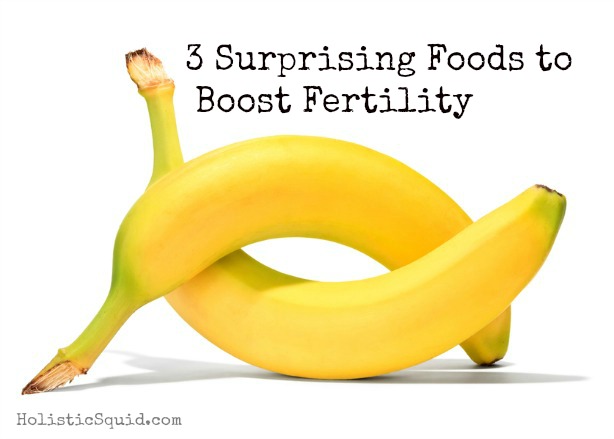
I've been loving my friend Kristen's new book, Beautiful Babies. Though nutrient-dense eating is not new to me, I've learned all sorts of fascinating ideas and facts. Here's just one:
Did you know that healthy traditional cultures often began preparing six months to one year prior to conception with foods to boost fertility?
It's true.
A lengthy pre-pregnancy prep time gives your body a fair chance to detox and heal as well as to consume the right nutritional resources to grow a thriving, healthy baby.
According to [Weston Price], traditional cultures placed a large emphasis on getting unique or special nutrient-rich foods for couples attempting to conceive. These foods fell into their own category and were considered sacred for their ability to promote life.
For example, tribes who lived in the Andes mountain range would send men down to the sea to collect fish eggs they would bring back to their women.
Hearty Gallic fishermen living on Scotland’s coast would feed women of childbearing age a dish made of fish heads stuffed with oats and chopped fish liver.
Hunter-gatherers in Canada, the Everglades, the Amazon, Australia, and Africa would save the liver, glands, blood, marrow, and adrenal glands of land animals for their wives.
Did I lose you at the fish eggs and organ meat?
Well, it turns out that these foods are all particularly rich in the nutrients necessary for baby making including:
- Vitamin A – “The symphony conductor for pregnancy—without it an entire cascade of processes necessary for successful conception, pregnancy, and birth would go wrong.” (p 24)
- Vitamin D which can reduce the likelihood of premature birth, infections, gestational diabetes, and pre-eclampsia.
- Vitamin K2 which is critical for a baby's brain, nervous system, and structural development.
- Folate, B6 and B12 – These play an essential role in fertility for both men and women, as well as for proper development of the fetus.
Here are the top 3 “Sacred” foods to boost fertility
#1 – Liver
Don't run away! This isn't as bad as it sounds. While I'm not personally a fan of a plate of liver and onions, over time I've found that liver not only is well-disguised in dishes like chili, meatloaf, and hamburgers, but it actually enhances the flavor of the dishes for the better.
 Paté makes a wonderfully decadent spread for sprouted grain crackers or slices of cucumbers, and thankfully it is fairly cheap to make or buy.
Paté makes a wonderfully decadent spread for sprouted grain crackers or slices of cucumbers, and thankfully it is fairly cheap to make or buy.
If you still can't fathom eating liver, try Kristen's suggestion for homemade liver “pills”:
Take your raw liver from grass-fed cows, cut it into pill-sized portions, then freeze them for at least fourteen days (which helps kill any pathogens that may be lurking in the meat). Now you can take your homemade “pills”. Each day, take these with a glass of water like you would pills, portioning them out so that you’re getting a serving of liver over a period of a week. You get all the benefits of the liver, but without having to “eat” it! (p 98)
Besides being the ultimate source of true vitamin A and folate, liver is also a rich source of essential saturated fat, cholesterol, omega-3 fatty acids, and B vitamins – all crucial players for fertility, pregnancy, and fetal development.
Aim to eat 3-5 ounces of liver, once or twice a week.
#2 – Fish roe
While caviar is considered a rich-man's food, other fish eggs can be remarkably affordable – especially when you consider the nutrient-dense punch they pack. A single ounce of roe “contains 8g of protein and 873 milligrams of omega-3 fats, and 54% of the RDA for vitamin B12!” (p 98).
If you are concerned about the ew-factor, a tiny portion goes a long way, and the salty/sour flavor enhances most savory dishes including dips, salad, sandwiches, and sushi.
#3 – Mollusks
Beautiful Babies explains that aside from fish roe, the “most nutrient-dense seafood are mollusks—oysters, clams, mussels, scallops, octopus, and squid.” (p 99) These are followed by shellfish and oily fish like salmon, sardines, and anchovies.
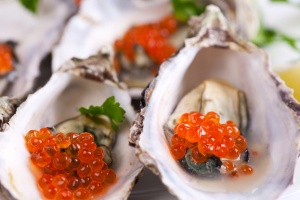 The old wives tales that oysters act as an aphrodisiac have been recently backed up by research when a team of scientists discovered that beyond zinc, shellfish (oysters in particular) are high in rare amino acids that trigger the increased levels of sex hormones in both men and women that help to improve libido.
The old wives tales that oysters act as an aphrodisiac have been recently backed up by research when a team of scientists discovered that beyond zinc, shellfish (oysters in particular) are high in rare amino acids that trigger the increased levels of sex hormones in both men and women that help to improve libido.
Eating mollusks is one of the easiest ways for modern diners to “consume the whole animal” – a best-practice of traditional nutrient-dense diets, since the organs of animals are rich in important fat soluble vitamins, minerals, and other nutrients.
Oysters, mussels, clams, and the like are rich in zinc, iron, selenium and other trace minerals; fat-soluble vitamins A and D; and the long-chain omega-3 fatty acids DHA and EPA.
For optimal nutrition, eat fresh seafood, 2-4 times per week, with a focus on fish roe, mollusks, shellfish, salmon, sardines, and anchovies.
(You can read more about how I fell in love with oysters here) and see Beautiful Babies for some great recipes and ideas for incorporating these sacred (albeit unusual) foods.
In addition to these sacred foods above, the Weston Price Foundation recommends that pregnant and nursing moms and couples looking to boost fertility eat the following EVERY DAY:
- Enough cod liver oil (non-heat treated) to supply 20,000 IU of vitamin A
- 1 quart of whole milk, preferably raw and from pasture-fed cows
- 2 or more eggs, preferably from pastured chickens
- Additional egg yolks, added to smoothies, salad dressings, scrambled eggs, etc.
- 2 tbsp. of coconut oil, used in cooking or in smoothies
- 4 tbsp. of butter, preferably from pasture-fed cows
- Fresh beef or lamb, always with the fat
- A cup or more of bone broth, either to drink or used in soups, stews, or sauces
- Cultured vegetables, condiments, and beverages
So why not just stock up on prenatal vitamins or eat more veggies?
According to Beautiful Babies, prenatal vitamins are like an insurance policy to (hopefully) avoid “devastating deformities and abnormalities”. Taking care to eat the right foods will take you beyond disaster prevention and help pave the way for faster conception, a smoother pregnancy and a child with radiant health.
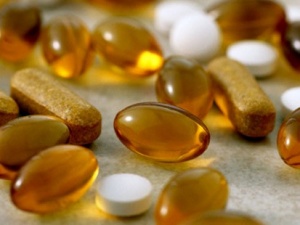 Most prenatal vitamins contain the synthetic form of many key nutrients. For example, folic acid sits in for folate and carotenoids are in place of vitamin A. The synthetic forms do not act the same as the real deals, so the body has to work harder to attempt to compensate.
Most prenatal vitamins contain the synthetic form of many key nutrients. For example, folic acid sits in for folate and carotenoids are in place of vitamin A. The synthetic forms do not act the same as the real deals, so the body has to work harder to attempt to compensate.
Many of the vitamins and minerals we commonly think we can get from vegetable sources (Vitamin A in carrots, zinc in grains, and fortified milk for vitamin D for example) are far more useful to the body from animal sources (vitamin A in liver, zinc in oysters, and vitamin D from fermented cod liver oil and pastured lard).
Though demonized by modern nutritional beliefs, saturated fat and cholesterol are essential for nearly every function in the body, including hormone function and proper absorption and assimilation of these important vitamins and minerals. If you are consuming adequate saturated fat, it is likely that you are also eating enough high quality protein (as nearly all saturated fats – with the exception of coconut and palm oils – are in meat, fish, eggs, and dairy).
So you see, preparing your body in advance with Real food is the ultimate way to boost fertility, make pregnancy a breeze, and welcome a healthy child into your lives.
 How your lifestyle may be inhibiting your ability to conceive – and what to do about it
How your lifestyle may be inhibiting your ability to conceive – and what to do about it
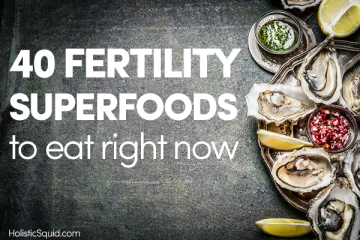
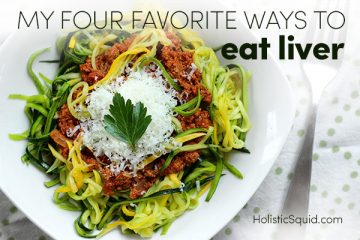
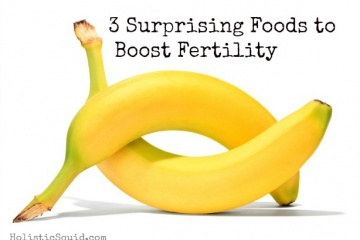


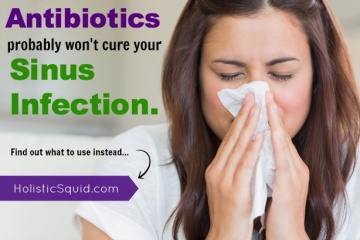

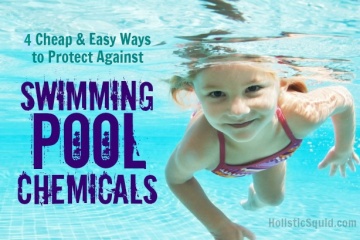
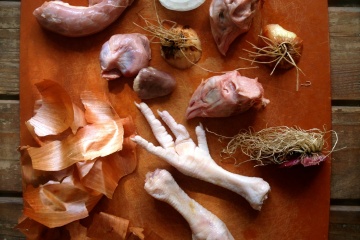
I already pre-ordered. I’m so jealous that you got to read it already!
Hi, do I qualify if I live in the UK? I’m going to order via Amazon… Thanks K
Hi Kristy – Yes! Just email your order receipt to booklaunch@foodrenegade.com. Once Kristen verifies your pre-order, she will email you a coupon for your free enrollment.
I’ve been reading a lot of research about taking vitamin A and many sources say the UL for adults is 3,000 IU’s but you mentioned to take 20,000 IU’s. Is this a typo in your article?
Hi Amanda – Not a typo. 20,000 IUs is the dose recommended by the Weston Price Foundation. You can read more about this here: http://holisticsquid.com/vitamin-a-and-pregnancy/
What are your thoughts on canned smoked oysters/clams if they are in olive oil only and bpa free tins?
Hi Liz, thanks for your question. I would say, great! Go for it!
Hi!
Great suggestions and a very fascinating read. Unfortunately, I avoid most seafood due to nausea and a dislike for the taste. Even mixed into dishes (soups and stews) I can’t seem to stomach fish of all varieties. oysters, etc.. Are there really no other highly nutrient natural foods that can give similar benefits?